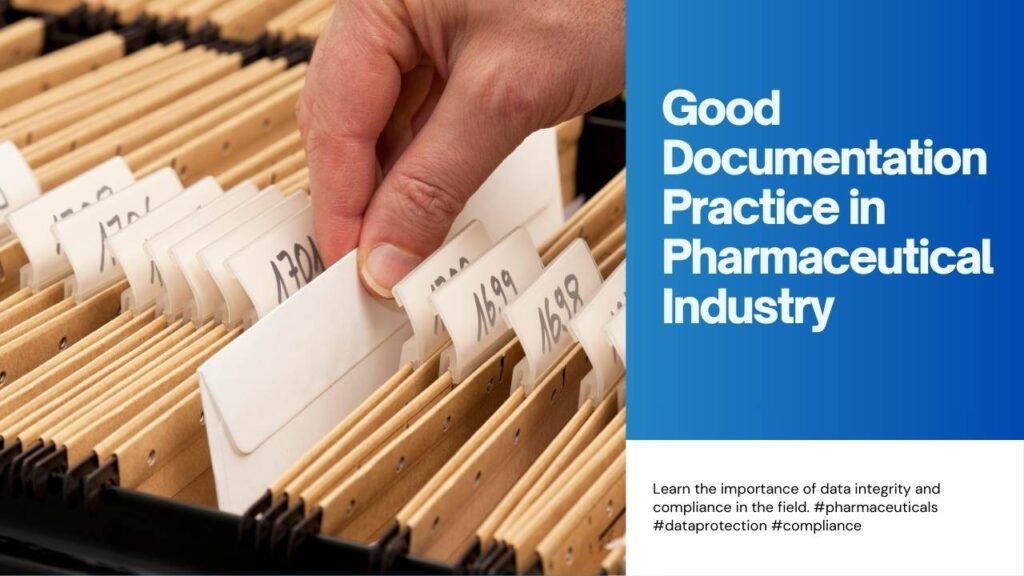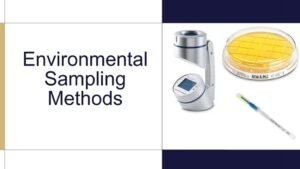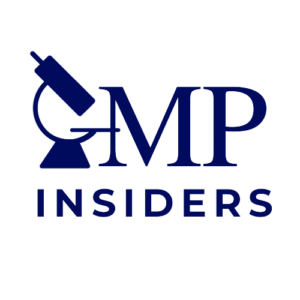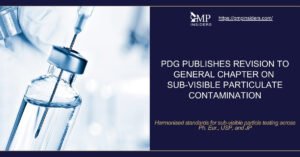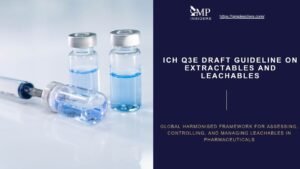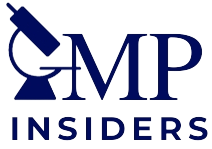Maintaining accurate and reliable documentation is crucial in the highly regulated industries of pharmaceuticals and medical devices. Good Documentation Practice (GDocP), also known as Good Recordkeeping Practice (GRK), is a set of guidelines that ensure data integrity and compliance with regulatory requirements.
By adhering to the principles of GDocP, organizations can confidently demonstrate the reliability and traceability of their data throughout the entire data lifecycle.
Key Principles
- Integral Part of Quality Assurance: Good documentation is crucial for quality assurance and compliance with GMP requirements.
- Types of Documentation: Documentation can exist in various forms, including paper-based, electronic, or photographic media. The Quality Management System should define all types of documents and media used.
- Documentation Generation and Control: All documents should be defined and adhere to, with appropriate controls for both electronic and paper-based systems.
- Design and Review of Documents: Documents should be designed, reviewed, and distributed with care. Approval, signature, and date are required for documents containing instructions.
- Regular Review and Updates: Documents within the QMS should be regularly reviewed and kept up-to-date.
- Good Documentation Practices: Handwritten entries should be clear, legible, and indelible. Records should be made or completed at the time of each action.
- Retention of Documents: Clear definitions of which records are related to each manufacturing activity. Specific retention periods for batch documentation.
The Importance of Good Documentation Practice

Good Documentation Practice is essential for several reasons. First and foremost, it ensures data integrity, meaning that the data collected and recorded accurately represents the activities, processes, and results it is intended to document.
This is particularly important in industries where the safety and efficacy of products, such as drugs and medical devices, are paramount.
Furthermore, compliance with regulatory requirements is a fundamental aspect of Good Documentation Practice. Regulatory authorities, such as the FDA, TGA, and EMA, enforce strict guidelines for recordkeeping and documentation practices. Non-compliance can result in audit findings, citations, and even product recalls, which can have severe consequences for organizations.
Here’s a closer look at why meticulous documentation is vital:
Ensuring Traceability and Accountability
Accurate and comprehensive documentation serves as a detailed roadmap of the entire production process. It allows for traceability, enabling manufacturers to track the journey of each pharmaceutical product from raw materials to the finished goods.
This traceability is vital for investigating any deviations, identifying the root causes of issues, and implementing corrective and preventive actions (CAPA). Moreover, it fosters accountability by clearly attributing specific actions and responsibilities to individuals or teams.
Supporting Quality Management Systems (QMS)
Documentation plays a central role in the implementation and maintenance of effective Quality Management Systems. Through meticulous record-keeping, pharmaceutical companies can establish and monitor the processes that contribute to product quality.
This, in turn, facilitates continuous improvement by identifying areas for enhancement and ensuring that corrective measures are promptly enacted.
Facilitating Regulatory Compliance
Regulatory bodies, such as the Food and Drug Administration (FDA) and the European Medicines Agency (EMA), mandate strict documentation standards to ensure the safety, efficacy, and quality of pharmaceutical products.
Proper documentation serves as evidence of adherence to these standards during inspections and audits. Non-compliance with documentation requirements can lead to regulatory actions, including product recalls, warnings, and even legal consequences.
Enhancing Transparency in Decision-Making
In a GMP-compliant environment, decisions are based on data and evidence. Comprehensive documentation provides the necessary information for informed decision-making at every stage of the pharmaceutical manufacturing process.
This transparency is essential not only for internal stakeholders but also for external regulatory agencies that evaluate the conformity of manufacturing practices.
Mitigating Risks and Ensuring Product Integrity
The pharmaceutical industry is inherently risk-averse, given the potential consequences of product defects or deviations. Effective GDocP minimizes risks by providing a clear record of procedures, deviations, and corrective actions.
This documentation becomes especially crucial when dealing with complex manufacturing processes, where precision and consistency are paramount to ensure the integrity of the final pharmaceutical product.
Supporting Continuous Process Improvement
Documentation serves as a valuable resource for analyzing historical data and identifying trends. By leveraging this information, pharmaceutical companies can implement proactive measures to enhance processes, reduce variability, and optimize efficiency. The feedback loop provided by good documentation practices facilitates a culture of continuous improvement within the organization.
SEE MORE: Different Types of GMP Documentation Used In Pharma Industry
The ALCOA+ Principles of Good Documentation Practice

The ALCOA+ principles serve as a foundation for good documentation practices. Each letter in the acronym corresponds to a characteristic that data should possess to ensure integrity and compliance. Let’s explore each principle in detail:
Attributable
Attributability means that data should be traceable to the person who recorded it. This requires clear identification of the individual responsible for recording the data, such as their name or unique identifier. It also involves using secure authentication methods to prevent unauthorized access or tampering with data.
Legible
Legibility ensures that data is easily readable and understandable. This includes using clear and concise language, avoiding abbreviations or jargon that may be unfamiliar to readers, and ensuring that handwriting is neat and legible. In digital documentation, using appropriate fonts and formatting can enhance legibility.
Contemporaneous
Contemporaneous recording means that data should be recorded in real-time or as close to the time of the activity as possible. This prevents the risk of backdating or falsification of data. It is essential to record the date and time of each entry accurately, either manually or through automated systems synchronized with reliable time sources.
Original
Originality refers to the preservation of data in its original form without alteration or manipulation. This can be achieved through using secure file formats, such as proprietary binary-checksummed formats, to store data. It is essential to have controls in place to prevent unauthorized modifications and to track any changes made to the data.
Accurate
Accuracy ensures that data reflects the true and correct values or observations. It involves following standard operating procedures (SOPs) and best practices for data collection, measurement, and recording. Regular calibration and validation of instruments and equipment can help maintain accuracy. Additionally, data should be reviewed and verified by qualified individuals to minimize errors.
(+) Complete
Completeness requires that all relevant information is recorded and included in the documentation. This includes capturing all necessary data points, associated metadata, and contextual information. Recording operator actions and events in the same data file can help maintain completeness and provide a comprehensive audit trail.
Consistent
Consistency ensures that data is recorded consistently, following established procedures and formats. This includes using standardized units of measurement, consistent naming conventions, and maintaining a consistent sequence of recording data. Consistency enhances data comparability and facilitates data analysis and interpretation.
Enduring
Endurance refers to the long-term storage and retention of data to ensure its availability for future reference and audits. Digital storage systems, such as data historians and secure servers, should be used to preserve data integrity and protect against loss or degradation of data over time.
Regular backups and periodic verification of data integrity are essential for enduring data storage.
Available
Availability means that data should be easily accessible when needed. This includes implementing robust data management systems that allow authorized individuals to retrieve and review data efficiently.
High-availability system architecture, redundant instrumentation, and communication networks can ensure data availability, even in the event of system failures or disruptions.
By following these ALCOA+ principles, organizations can establish a robust framework for good documentation practices, ensuring data integrity, compliance, and the ability to demonstrate traceability throughout the data lifecycle.
Key Elements of Good Documentation Practices
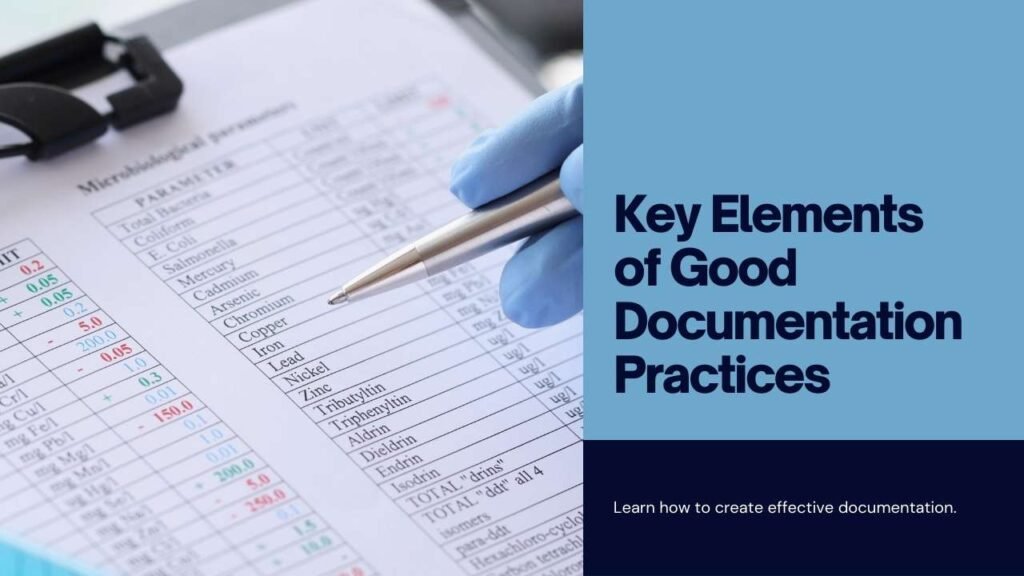
Implementing Good Documentation Practices (GDocP) requires attention to various key elements to ensure the integrity and reliability of documentation throughout the pharmaceutical manufacturing process. The following components are essential for maintaining a robust and compliant documentation system:
1. Document Control
Let’s take a look at some of the things that are important for document control:
Version Control
Importance: Version control is a crucial aspect of Document Control in GDocP, preventing the use of outdated documents that could compromise the manufacturing process or product quality.
Explanation: When documents undergo revisions, it is imperative to mark and differentiate each version. This involves assigning unique version numbers or codes along with revision dates. By doing so, it ensures that users are always referring to the most recent and approved version of a document.
Tips:
- Implement an automated document management system that tracks and archives versions.
- Communicate versioning conventions to all relevant personnel.
- Establish a protocol for the withdrawal and archiving of obsolete documents.
Document Numbering
Significance: A systematic document numbering system is vital for efficient document management, facilitating easy retrieval, tracking, and maintenance throughout their lifecycle.
Explanation: Each document should have a unique identifier or number that follows a standardized format. This not only aids in organization but also streamlines the search and retrieval process. A well-structured numbering system enhances traceability and accountability.
Tips:
- Develop a numbering system that provides information about the document type, department, and purpose.
- Ensure consistency in numbering across all document types and departments.
- Periodically review and update numbering conventions to accommodate changes in the organization’s structure or document types.
Document Approval Processes:
Necessity: Documented approval processes ensure that only authorized and reviewed documents are used in manufacturing operations.
Explanation: Before a document is put into use, it should undergo a formal approval process. This involves obtaining signatures or approvals from designated personnel who verify the document’s accuracy, completeness, and compliance with established standards. An efficient approval process prevents the use of unreviewed or unauthorized documents.
Tips:
- Clearly define roles and responsibilities in the approval process.
- Implement electronic workflows to streamline and automate approval procedures.
- Establish escalation procedures for instances where approvals are delayed or unavailable.
Access Controls
Role in GDocP: Restricting access to critical documents minimizes the risk of unauthorized alterations or use.
Explanation: Controlling access ensures that only authorized individuals can view or modify specific documents. This is particularly important for sensitive or confidential information. By limiting access based on job roles and responsibilities, organizations can safeguard the integrity of their documentation system.
Tips:
- Regularly review and update access permissions to align with personnel changes.
- Conduct periodic audits to monitor and ensure compliance with access controls.
- Implement password protection and encryption for electronic documents to enhance security.
2. Data Integrity
Some of the things to consider for data integrity are:
Data Security
Measures: Ensure electronic data security through encryption, user authentication, and restricted access.
Explanation: Data security is paramount to maintaining the integrity of electronic records. Encryption safeguards sensitive information during storage and transmission, while user authentication ensures that only authorized personnel can access the data. Implementing restricted access controls further fortifies the security of critical electronic records.
Tips:
- Regularly update and test encryption protocols to address emerging security threats.
- Implement multi-factor authentication for an added layer of access control.
- Conduct periodic security audits to identify vulnerabilities and strengthen protection measures.
Data Accuracy:
Critical Role: Accurate data recording at all stages of manufacturing is fundamental for ensuring product quality and regulatory compliance.
Explanation: Precision in data entry is essential to prevent errors that could compromise product quality and regulatory compliance. Accurate data recording ensures that the information used for decision-making, analysis, and reporting is reliable, contributing to the overall integrity of the manufacturing process.
Tips:
- Provide thorough training to personnel responsible for data entry.
- Implement automated validation checks to catch and correct data entry errors in real-time.
- Establish a culture that values accuracy and encourages immediate correction of identified errors.
Data Retention:
Necessity: Clearly define data retention periods based on regulatory requirements to facilitate compliance during inspections.
Explanation: Establishing defined data retention periods ensures that records are retained for the required duration, as dictated by regulatory guidelines. This facilitates compliance during audits and inspections. Proper data retention also contributes to historical data analysis and trend identification for continuous process improvement.
Tips:
- Regularly review and update data retention policies in line with evolving regulatory standards.
- Communicate data retention policies to relevant personnel.
- Establish an efficient archiving system to facilitate easy retrieval during inspections.
SEE ALSO: Data Integrity and Data Governance in GMP
3. Training and Awareness
Some of the things to consider when conducting training regarding good documentation practices include:
Employee Training Programs:
Need for Training: Ongoing training programs are essential for ensuring that personnel understand and adhere to GDocP.
Explanation: Training programs play a pivotal role in familiarizing employees with the principles of Good Documentation Practices (GDocP) and ensuring that they are equipped to execute their responsibilities accurately.
These programs should cover not only the technical aspects of documentation but also the broader context of why GDocP is crucial for product quality, regulatory compliance, and patient safety.
Tips:
- Develop a comprehensive training curriculum that includes GDocP principles, relevant regulations, and practical application.
- Tailor training sessions to different job roles, emphasizing specific documentation requirements for each role.
- Periodically assess the effectiveness of training programs through evaluations and feedback sessions.
Documentation Awareness Campaigns
Role in Culture of Compliance: Awareness campaigns contribute to fostering a culture of compliance among employees.
Explanation: Awareness campaigns serve to continually reinforce the importance of proper documentation practices. By creating a culture where employees understand the significance of their role in maintaining accurate and complete records, organizations can establish a collective commitment to GDocP. These campaigns should utilize various communication channels to reach all levels of the organization.
Tips:
- Use multiple communication channels, including emails, posters, and intranet announcements, to promote awareness.
- Highlight real-world examples that illustrate the impact of good documentation practices on product quality and patient safety.
- Incorporate GDocP awareness into regular team meetings and discussions.
Implementing Good Documentation Practice

Implementing good documentation practices requires a combination of processes, technologies, and training. Let’s take a look again at the key steps to consider:
Establish Document Control Procedures
Develop and implement document control procedures that outline the requirements for creating, reviewing, approving, and storing documents. These procedures should include guidelines for version control, document numbering, and document retention periods.
Regular reviews and updates of these procedures are essential to ensure they remain aligned with regulatory requirements.
Tip 1: Document Templates and Examples
Provide standardized document templates with clear instructions. For instance, a Batch Record template should include designated sections for raw materials, equipment used, and process parameters.
Tip 2: Visual Workflows
Create visual workflows to illustrate the document creation and approval process. This can be a flowchart embedded in the SOP, helping users understand the steps involved.
Use Electronic Documentation Systems
Transitioning from paper-based documentation to electronic documentation systems can enhance data integrity, accessibility, and traceability. Electronic systems allow for easier searching, sorting, and analysis of data. They also provide features such as audit trails, version control, and access controls to ensure data integrity and compliance.
Tip 1: User-Friendly EDMS
Choose an electronic document management system that is user-friendly. For example, use an EDMS that allows easy document upload, version tracking, and electronic signatures.
Tip 2: Automated Reminders
Implement automated reminders for document review and approval deadlines. This ensures timely updates and prevents the use of outdated documents.
Train Employees on Good Documentation Practices
Providing comprehensive training to employees on good documentation practices is crucial. Training should cover the principles of ALCOA+ and other relevant guidelines and regulations. Employees should understand the importance of accurate and timely documentation, the consequences of non-compliance, and the best practices for recording, reviewing, and storing data.
Tip 1: Online Training Modules
Develop interactive online training modules. Include scenarios and quizzes to reinforce learning. For example, create an e-learning module on GDocP principles with case studies.
Tip 2: Hands-On Workshops
Conduct hands-on workshops where employees can practice documenting specific processes. For instance, simulate a batch production scenario where employees fill out a batch record.
Conduct Regular Audits and Reviews
Regular audits and reviews of documentation practices are essential to identify any gaps or non-compliance issues. Internal audits can help organizations proactively address potential issues and make necessary improvements. External audits by regulatory authorities also provide an opportunity to validate compliance with industry standards and regulations.
Tip 1: Audit Checklists
Develop audit checklists that cover key documentation areas. For instance, create a checklist that includes items like document completeness, version control, and adherence to SOPs.
Tip 2: Rotate Internal Auditors
Rotate internal audit responsibilities among different team members. This ensures a fresh perspective and promotes a culture of shared responsibility for documentation quality.
Tip 3: Mock Inspection Drills
Conduct regular mock inspection drills. Simulate scenarios where regulatory inspectors review documentation. This helps teams practice their responses and identify areas for improvement.
Ensure Data Security and Integrity
Implement appropriate data security measures to protect against unauthorized access, tampering, or loss of data. This includes using secure authentication methods, encryption techniques, and access controls. Regular data backups, disaster recovery plans, and data validation procedures are also critical to maintaining data integrity and availability.
Tip 1: Encryption Software
Invest in encryption software for electronic records. Ensure that all sensitive data, such as formulation details, is encrypted to prevent unauthorized access.
Tip 2: Data Integrity Training
Provide training on data integrity principles. Emphasize the importance of accurate data entry and the consequences of data manipulation.
Continuously Improve Documentation Processes
Continuous improvement is key to ensuring the effectiveness and efficiency of documentation processes. Regularly review and evaluate documentation practices, seeking feedback from employees and stakeholders. Identify areas for improvement and implement appropriate corrective and preventive actions.
Tip 1: Employee Feedback Sessions
Conduct regular feedback sessions with employees involved in documentation. For example, organize monthly feedback sessions to gather insights on challenges and improvement suggestions.
Tip 2: Kaizen Events
Implement Kaizen events focused on documentation processes. Encourage teams to identify and eliminate inefficiencies, such as redundant approvals or excessive documentation steps.
Tip 3: Regulatory Update Alerts
Set up a system to receive alerts on regulatory updates. For instance, subscribe to newsletters or regulatory websites that provide timely information on changes.
By implementing these steps and integrating good documentation practices into the organization’s culture and processes, organizations can ensure the integrity, compliance, and reliability of their documentation and data.
Challenges in Implementing Good Documentation Practices

Despite the undeniable importance of Good Documentation Practices (GDocP) in ensuring pharmaceutical product quality and regulatory compliance, organizations often face a myriad of challenges in their implementation. Acknowledging and addressing these challenges is crucial for establishing and maintaining a robust documentation system. Here are some common hurdles:
Complexity of Processes:
Challenge: Pharmaceutical manufacturing processes are inherently complex, involving numerous steps and variables. Documenting these intricate processes comprehensively can be challenging, leading to the potential for errors or oversights.
Mitigation:
- Simplify documentation procedures where possible without compromising necessary detail.
- Provide clear guidelines and templates for documenting complex processes.
Human Error:
Challenge: The risk of human error in data entry, document creation, or approval processes can compromise the accuracy and completeness of records.
Mitigation:
- Offer regular training programs on GDocP principles and emphasize the importance of accuracy.
- Implement automated validation checks to catch and correct errors in real-time.
Resistance to Change:
Challenge: Employees may resist adopting new documentation practices due to the perceived burden or disruption to established routines.
Mitigation:
- Communicate the benefits of GDocP implementation, emphasizing improved efficiency and product quality.
- Involve employees in the development and refinement of documentation processes.
Insufficient Resources:
Challenge: Inadequate resources, including time, personnel, and technology, can hinder the proper implementation and maintenance of a robust documentation system.
Mitigation:
- Allocate dedicated resources to documentation tasks, considering the critical role they play.
- Invest in user-friendly electronic document management systems to streamline processes.
Lack of Standardization:
Challenge: Inconsistencies in documentation formats and standards across different departments or teams can lead to confusion and hinder the retrieval of critical information.
Mitigation:
- Establish standardized documentation templates and formats.
- Conduct regular audits to ensure adherence to documentation standards.
Technological Challenges:
Challenge: Implementing and maintaining electronic document management systems may pose technological challenges, especially for smaller organizations.
Mitigation:
- Provide comprehensive training on electronic document management systems.
- Consider phased implementation, allowing for gradual adaptation to new technologies.
Regulatory Changes:
Challenge: The pharmaceutical industry is subject to evolving regulatory standards. Keeping documentation practices aligned with these changes can be demanding.
Mitigation:
- Stay vigilant and proactive in monitoring regulatory updates.
- Establish a regulatory affairs team to interpret and implement changes effectively.
Addressing these challenges requires a holistic and proactive approach. By fostering a culture that values and prioritizes Good Documentation Practices, organizations can overcome these hurdles and build a documentation system that not only meets regulatory requirements but also enhances overall operational efficiency.
Regulatory Requirements for Documentation in GMP
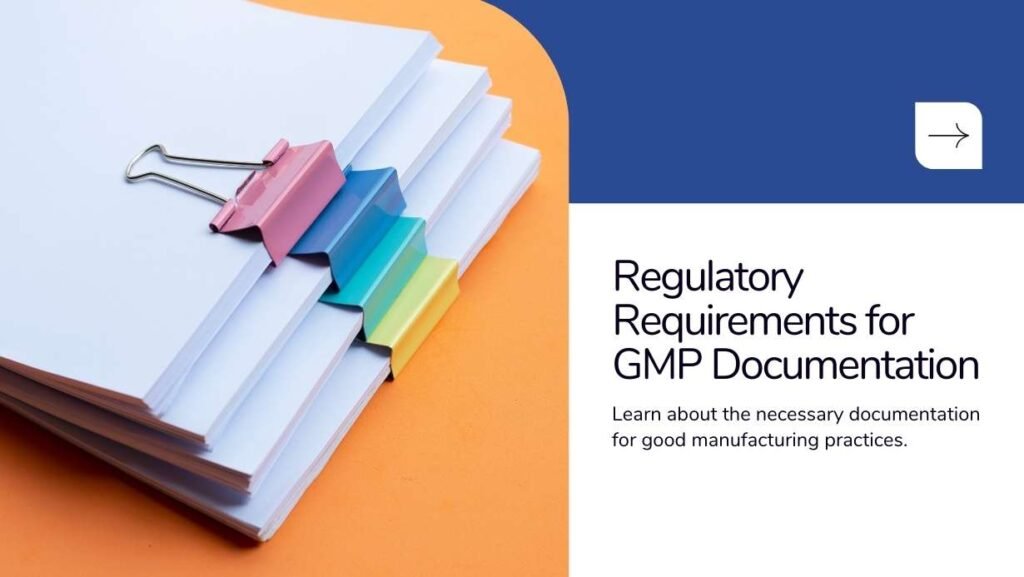
Adherence to stringent regulatory requirements is imperative in the pharmaceutical industry, particularly within the framework of Good Manufacturing Practice (GMP). Regulatory bodies, such as the Food and Drug Administration (FDA) in the United States and the European Medicines Agency (EMA) in Europe, have established comprehensive guidelines outlining specific documentation expectations.
Compliance with these regulations is non-negotiable for pharmaceutical companies seeking to ensure product safety, efficacy, and quality. Here’s an overview of key regulatory requirements for documentation in GMP:
FDA Requirements:
1. Current Good Manufacturing Practice (cGMP):
Pharmaceutical manufacturers in the United States must comply with the FDA’s cGMP regulations outlined in 21 CFR Part 211. These regulations cover various aspects of manufacturing, including documentation practices.
2. Data Integrity Guidance:
The FDA has issued guidance documents emphasizing the importance of data integrity in pharmaceutical manufacturing. Firms are expected to implement controls to ensure the accuracy, reliability, and completeness of their records.
3. Electronic Records and Signatures:
Title 21 CFR Part 11 outlines the FDA’s expectations regarding electronic records and electronic signatures. Pharmaceutical companies utilizing electronic systems must implement controls to ensure data integrity, confidentiality, and compliance with regulatory requirements.
EMA Requirements:
1. EudraLex – Volume 4: Good Manufacturing Practice (GMP) Guidelines:
The European Union’s GMP guidelines, outlined in EudraLex Volume 4, provide detailed requirements for documentation practices. This includes specifications for batch documentation, record-keeping, and data integrity.
2. Annex 11 – Computerized Systems:
Annex 11 to the GMP guidelines specifically addresses computerized systems. It sets out the expectations for the use of electronic systems in pharmaceutical manufacturing, including requirements for electronic records and electronic signatures.
Common International Standards:
1. International Council for Harmonisation (ICH) Guidelines:
The ICH develops guidelines that aim to harmonize pharmaceutical regulations globally. ICH Q7, for instance, provides guidance on GMP for active pharmaceutical ingredients. Compliance with ICH guidelines contributes to international regulatory acceptance.
FAQ
Companies can ensure compliance with Good Documentation Practices by establishing clear procedures, providing regular training to personnel, implementing electronic document management systems, conducting periodic audits, and staying informed about regulatory requirements. Continuous improvement initiatives and a culture of accountability are also vital.
Internal audits should be conducted regularly, typically at predefined intervals such as quarterly or semi-annually. The frequency may vary based on organizational needs and regulatory requirements. Regular audits help identify areas for improvement and ensure ongoing compliance.
Data integrity is paramount in Good Documentation Practices. It ensures that data recorded in documents is accurate, reliable, and unaltered. Measures such as encryption, user authentication, and regular data integrity audits are employed to safeguard the integrity of electronic records.
Conclusion
Good Documentation Practice is fundamental to maintaining data integrity, compliance with regulatory requirements, and the overall quality of products in the life sciences industry. Adhering to the ALCOA+ principles provides a framework for organizations to achieve these goals.
By establishing robust document control procedures, using electronic documentation systems, training employees, conducting audits and reviews, ensuring data security, and continuously improving documentation processes, organizations can confidently demonstrate the reliability and traceability of their data.
Good documentation practices are not only essential for regulatory compliance but also contribute to the overall efficiency, effectiveness, and reputation of the organization.

